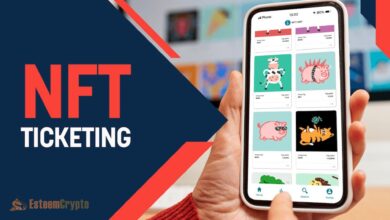NFT Rarity—How to Calculate?

NFT Rarity. An NFT’s cultural and aesthetic value is influenced by its rareness. For instance, a unique non-fungible token (NFT) with high historical or cultural significance can be considered an esoteric and desirable collectible. NFT rarity is a critical consideration because the rarity of a valuable token affects its market value, attraction, and resale value. NFT collectors also always seek unique and interesting nonfungible tokens.
However, the value and significance of an NFT are not directly proportional to its rarity. The rarity and desirability of nonfungible tokens to collectors can also be influenced by factors such as the artwork’s quality and the significance of this piece’s culture. In this post, we’ll discuss NFraritwe’llwlit’s calculation and the factors that influence it.
Understanding NFT Rarity
One measure of a nonfungible token’s rarity is the rarity token’s sites compared to other collection tokens. Many variables influence the rarity of non-fungible tokens, including the total number of tokens in a collection, the quantity of a specific token, and the special characteristics of an NFT.
Each nonfungible token in a certain collection may become more valuable if, for example, the total number of NFTs is tiny. Even when a certain collection contains many NFTs, a unique nonfungible token with unique features—like an animation, sound effect, or color scheme—may be quite rare.
Rarity is a major factor determining the value of NFT collectibles. The price of uncommon NFTs in NFT marketplaces can increase because collectors want them, and their value increases. As a bonus, several NFT projects have developed algorithms to determine the collection-wide rarity of oRarityvidual NFTs, which can help both buyers and sellers better understand how to value NFTs.
What is NFT Rarity Checker?
The scarcity, uniqueness, and rarity of a Rarity non-fungible token (NFT) determine its value, and tools and services are available to help users determine the rarity of a certain NFT.
Nonfungible token rarity calculators consider various factors when determining a token’s worth. An NFT rarity checker can use pixel density to determine the rarity of a random, fungible token image. An alternate NFT rarity checker would look at a nonfungible token’s blockchain copy count or demand. To find out how rare a nonfungible token is, an NFT rarity calculator might use the following procedures:
- Identify the rarity: The Rarity calculator must first determine the precise NFT being assessed. This may involve entering the nonfungible token’s token ID or other identifying information.
- Collect data: The calculator then gathers information about the NFT, such as its characteristics, sales performance, and blockchain data.
- Analyze attributes: The calculator may evaluate the NFT’s visual and other NFT properties properties, including pixel density and distinguishing features.
- Assess rarity: The calculator can then utilize algorithms to determine the NFT’s rarity based on the information gathered and by examining the non-fungible token’s characteristics. The rarity of the NFT can be compared to that of other nonfungible tokens in the same collection; sales information and market trends may also be examined.
- Provide results: The calculator also offers a numerical evaluation of the NFT’s rarity, subsequently presented as a score or rating. Buyers and sellers can use this information to estimate the NFT’s value.
It is important to remember that these calculators are not perfect. Other factors, like current market conditions and buyer and seller feelings, can also affect the rarity of an NFT.
How do you Determine NFT Rarity?
The unique characteristics of each nonfungible token (NFT) are among the many elements that go into establishing its rarity. Rarity is one of the most important characteristics that might show that an NFT is unique. The fewer copies of an NFT, the more precious and uncommon it will likely be. Estimating the rarity of an oRaritynfungible token is as simple as counting its blockchain-present copies.
A nonfungible token’s rarity ccRarityetoken’sby a multitude of features. For example, an NFT could be easily recognizable owing to its unique color scheme, unusual combination of features, or subject matter. You can compare these features to other NFTs in the same category to determine how unusual an NFT is.
The demand for and popularity of NFTs can also impact their rarity. Although there are many interesting FFT collections, they might be expensive and hard to come by. You may find this out by looking at sales data, mentions on social media, and other metrics that measure popularity.
The provenance or history of an NFT could impact its rarity. A nonfungible token with a unique history, such as being owned by a famous person or appearing in a popular meme, might be more valuable and scarce than other NFTs.
How are NFT Rarity Rankings Calculated?
Nonfungible token rarity rankings can be generated in various ways, depending on the specific NFT collectibles, the number of editions or copies in the collection, and the market demand for that NFT.
The formula usually requires assigning a numerical value to each attribute or characteristic to find the rarity score and then adding them. The exact formula, however, could vary from one NFT platform or market to another. Some platforms may additionally employ machine learning techniques or external data sources to create rarity scores.
Formula to calculate NFT’s rarity
(Rarity score for a trait value) = 1/(Trait rarity of that trait value)
Platforms like Nansen and Rarity tools use algorithms to look at the attributes and characteristics of each NFT in a collection to determine the rarity score.
To rank the rarity rarity, below are a few typical methods:
- Algorithmic scoring: One method for determining NFT rarity rankings is to employ an algorithmic scoring system that rates each nonfungible token according to several criteria, including rarity, Rarityies, popularity, and provenance. The rarity can be ranked using these metrics.
- Comparative analysis: In this method, each NFT is compared to other nonfungible tokens from the same collection or category. This analysis can provide a qualitative rating of each NNFT’srarity bRaritaccountount variables, such as scarcity, qualities, sales history, tory, and market trends.
- Data analysis: Data analysis, such as sales data or social media mentions, can determine nonfungible token rarity rankings. This study can reveal which NFTs are the most well-liked and in-demand and rank the rarest and most expensive nonfungible tokens.
- Community feedback: The opinions of NFT collectors, creators, and specialists can impact the rarity rankings of nonfungible tokens. An amalgamation of these ratings can determine the rarest and most expensive nonfungible tokens in a certain category or collection.
Is a High Rarity Score Good for an NFT?
Are you curious about the meaning of a high rarity score and what it means for nonfungible tokens? Also, what constitutes a good NFT score? The answer is that there isn’t a universally applicable metric for determining what an NFT rarity score should be; rather, the score should be based on several criteria, including the particular set of nonfungible tokens under consideration, the characteristics or qualities being evaluated, and the current state of the market.
Even though having a high rarity score is viewed as a positive thing for an NFT, it’s important to remember that these scores are often subjective and can be influenced by several factors. Furthermore, other factors, such as the nonfungible token’s cultural or historical significance and the artist’s renown, may influence the value and resale price. Hence, a high rarity score is not necessarily indicative of these things. So, although a high rarity score could be a good indication of the worth and uniqueness of a nonfungible token, other factors must also be considered.




